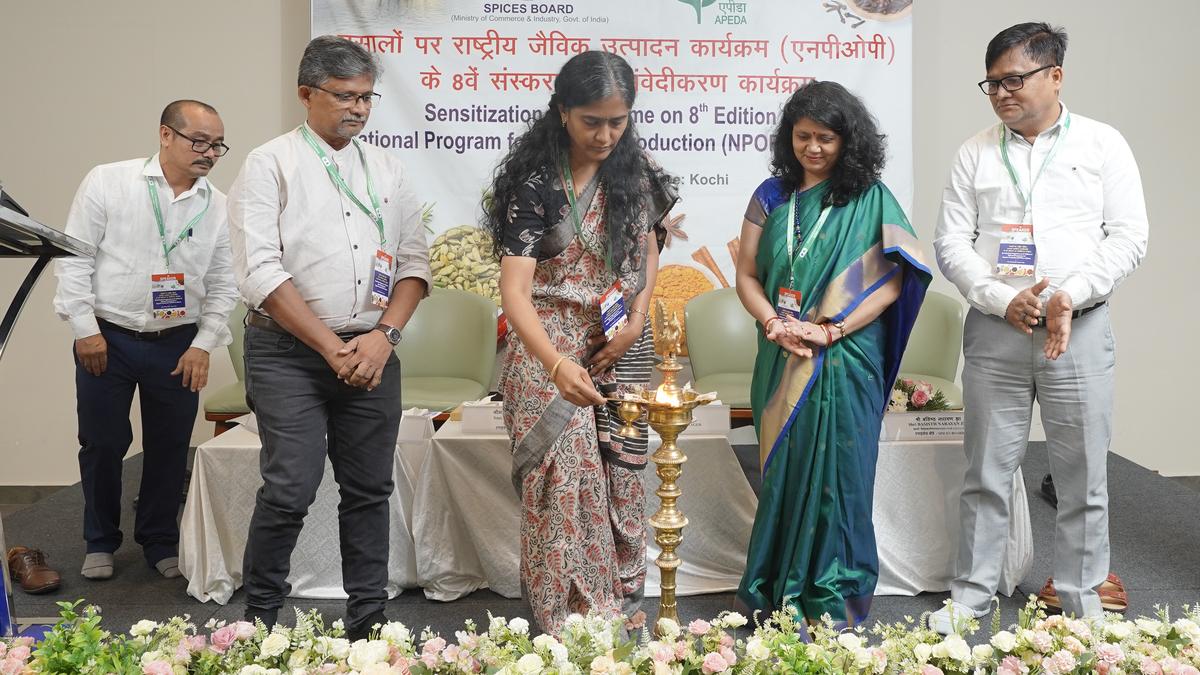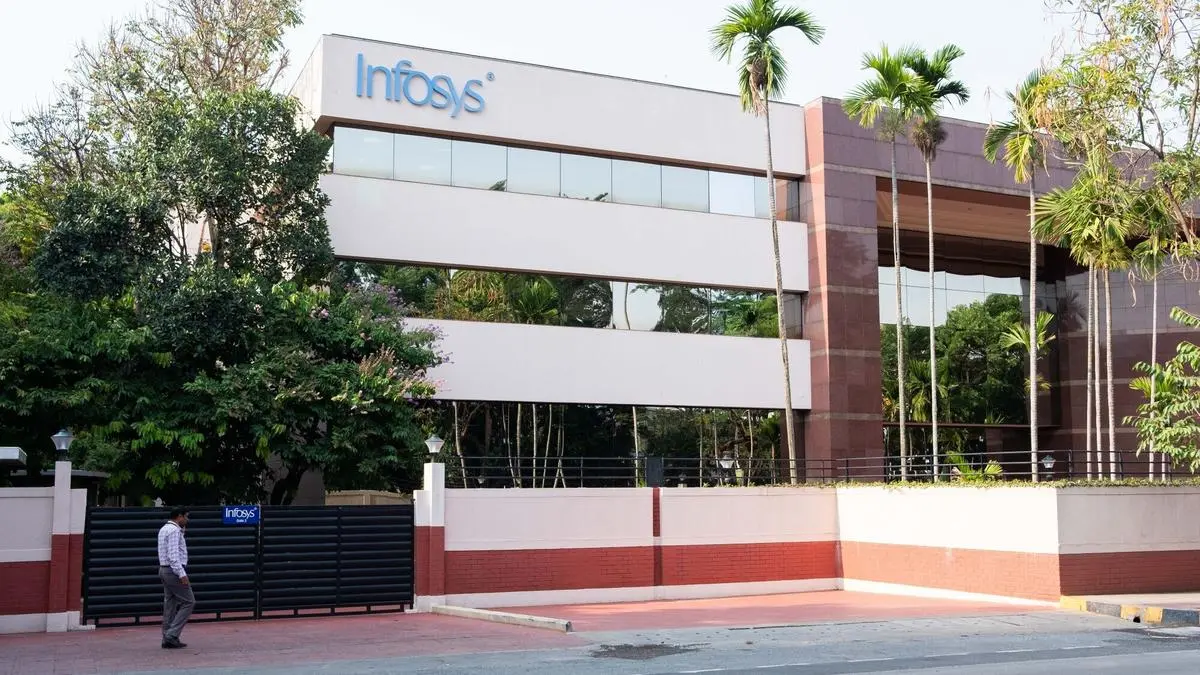Business
Cognizant CEO Ravi Kumar: ‘We are a human capital company, a hiring magnet’
Comments
“So we hired 20,000 school graduates. We have huge usually invested into learning infrastructure. We think when the next wave comes, we have more people inside even before we can start to hire,” he said. Nearly 14,000 associates have returned to the company, he told analysts. “We are a hiring magnet. Right now, I have the ability to hire 20,000 laterals per quarter. I am not only preparing for a slow velocity market, but preparing for a high velocity market if it happens at any point of time,” he added.
Related Stories
Cognizant increases share buyback by $2 billion, raising total to $3.1 billion
Cognizant will outline its strategies and future plans during the upcoming Investor Day, where insights from key clients will also be shared.
Every time there was a new wave, everybody went and hired people. However, Cognizant first used a reskilling infrastructure to get ready at scale in economics, he noted.The company said that in 2023-2024, it had three imperatives. The first was to become an employer of choice. The second was to optimise delivery and operations by improving margin execution on large deals, restructure and streamline the organization with NextGen programme. The third was to accelerate growth by reinvigorating financial services, extend growth beyond healthcare into products and resources and CMT. Cognizant CEO Ravi Kumar S stressed the company’s human capital strength while addressing investors and analysts at Investor Day 2025 in New York on Tuesday. Kathy Diaz, Chief People Officer, Cognizant, said, there is an increasing returner rate with over 50 per cent increase in two years, and 20,000 more in pipeline.The strength of Cognizant’s culture comes from entrepreneurial spirit, he added, sharing that the company’s Bluebolt innovation initiative has given rise to 2,50,000 ideas from the company’s associates with 50 per cent of them in AI.

Cognizant CEO Ravi Kumar S stressed the company’s human capital strength while addressing investors and analysts at Investor Day 2025 in New York on Tuesday. “So we hired 20,000 school graduates. We have huge usually invested into learning infrastructure.
We think when the next wave comes, we have more people inside even before we can start to hire,” he said. Nearly 14,000 associates have returned to the company, he told analysts. The next wave of enterprise transformation is in the areas of embedded engineering; “Physicality” product engineering; smart manufacturing; autonomous systems; AI; enabling hyper-productivity; Industrializing AI and ‘identifying’ the enterprise, he said.![]()
Cognizant increases share buyback by $2 billion, raising total to $3.1 billion
Cognizant will outline its strategies and future plans during the upcoming Investor Day, where insights from key clients will also be shared.
Every time there was a new wave, everybody went and hired people. However, Cognizant first used a reskilling infrastructure to get ready at scale in economics, he noted.Kathy Diaz, Chief People Officer, Cognizant, said, there is an increasing returner rate with over 50 per cent increase in two years, and 20,000 more in pipeline.The company said that in 2023-2024, it had three imperatives. The first was to become an employer of choice.
The second was to optimize delivery and operations by improving margin execution on large deals, restructure and streamline the organization with NextGen program.
The third was to accelerate growth by reinvigorating financial services, extend growth beyond healthcare into products and resources and CMT. The strength of Cognizant’s culture comes from entrepreneurial spirit, he added, sharing that the company’s Bluebolt innovation initiative has given rise to 2,50,000 ideas from the company’s associates with 50 per cent of them in AI.
“We are a hiring magnet. Right now, I have the ability to hire 20,000 laterals per quarter. I am not only preparing for a slow velocity market, but preparing for a high velocity market if it happens at any point of time,” he added.
Business
Spices Board host awareness programme on organic production

The technical sessions featured insightful presentations on organic certification, updated NPOP standards, market trends, and practical challenges. Saswati Bose elaborated on the 8th edition’s provisions for sustainable spice production. The Spices Board, in collaboration with APEDA, conducted a one-day sensitisation programme on the 8th edition of the National Programme for Organic Production (NPOP) on spices at Kochi. The event aimed to raise awareness on updated NPOP standards for sustainable spice production besides promoting the export of organic spices and spice products.Thejas Thayyil, Business Head, Biowin Agro Research, spoke on the scope and global demand for organic spices. Hemalatha said, “Sustainable agriculture aims to ensure safe and nutritious food at affordable cost, farmer profitability, and environmental conservation. In this context, the 8th edition of NPOP provides essential guidelines for organic spice production in harmony with nature. I hope this programme deepens stakeholders’ understanding and commitment to sustainable practices.”


P. Hemalatha, Secretary, Spices Board inaugurated one-day sensitisation programme on the 8th edition of the National Programme for Organic Production (NPOP) on spices. B. N. Jha, Director (Marketing), Spices Board; Saswati Bose, General Manager, APEDA, Dharmendra Das, Director (Development), Spices Board and . Joji Mathew, NPOP Lead Auditor were present.
Business
Analysts seek visibility on tariff impacts on bottomlines, margins

IT analysts have been grilling the top CXOs of top-tier companies like TCS, Infosys and Wipro to get a visibility on the terrain in the backdrop of tariffs. K Krithivasan, Chief Executive Officer and Managing Director of TCS, said that the Consumer Business Group saw heightened caution and delays in discretionary projects, especially in the US.Jayesh Sanghrajka, Chief Financial Officer (CFO) of Infosys, tariffs and trade barriers were likely to lead to a subdued spend and delayed decision-making.
The impact
Based on client conversations, large transformation projects are being paused or delayed. Clients with budgets are waiting for certainty about the situation before moving forward.There is some impact across the board, but there are some sectors more impacted than others. “For instance, our consumer business, you’re seeing more impact like retail, CPG, airlines, travel hospitality, we see more impact. Similarly, there is an impact in the auto sub segment within manufacturing. But if you take BFSI, by and large the segment is doing okay. There is some softness in insurance,” he said.“Retail sector has been impacted by economic uncertainty resulting in lower consumer spending in core markets. Due to recent tariff announcements, client budgets are expected to be tightened and there is increased caution. Decision cycles are getting stretched for discretionary spend and large deals,” he said.Pallia said that after the pause for 90 days on the tariffs, there was a little bit of stability over the last two few weeks.
Uncertain economic environment
In the recent earnings call, he said that it was driven by the significant drop in consumer sentiment in February, which had preceded changes in global trade and tariffs, creating a domino effect on retail CPG and TTH (travel, transportation, and hospitality) industries.“The impact of tariffs on IT service providers will be a function of their portfolio of offerings and end markets,” Prashant Shukla, vice president, Everest Group, said. “Weakness in auto, especially in Europe continues. We are helping clients in aerospace resolve bottleneck in the supply chain,” he said. “For instance, in terms of topline and deal pipelines, part of portfolio which is discretionary in nature with exposure to directly impacted industries like manufacturing will suffer much more than, say, an essential, non-discretionary service with industry which is not directly impacted by tariffs, like banking. In short to medium term, cost-optimisation services will see more takers,” he said.Published on April 28, 2025 “We are seeing this impact not just in the US, but also in Europe. Similarly, these impacts are being seen across sectors, directly or indirectly. But some sectors have been impacted more, like consumer, manufacturing. Within manufacturing, specifically automotive and industrial, are impacted,” he said, responding to a query.Even as reciprocal tariffs by US President Donald Trump trigger an economic chaos across the world, IT analysts and investors are trying to weight how these tariffs could impact the bottomlines and margins of IT companies.He said the clients in all the industries were taking a lot more cautious approach. “And they’re also doing scenario planning, because they would like to see when this whole thing is settled down, before they start making more business decisions,” he said.

The impact
“We are seeing this impact not just in the US, but also in Europe. Similarly, these impacts are being seen across sectors, directly or indirectly. But some sectors have been impacted more, like consumer, manufacturing. Within manufacturing, specifically automotive and industrial, are impacted,” he said, responding to a query.“Retail sector has been impacted by economic uncertainty resulting in lower consumer spending in core markets. Due to recent tariff announcements, client budgets are expected to be tightened and there is increased caution. Decision cycles are getting stretched for discretionary spend and large deals,” he said.Srini Pallia, CEO and MD of Wipro Ltd, felt that the economic environment had become uncertain on the back of tariff increases.Pallia said that after the pause for 90 days on the tariffs, there was a little bit of stability over the last two few weeks.
Uncertain economic environment
Even as reciprocal tariffs by US President Donald Trump trigger an economic chaos across the world, IT analysts and investors are trying to weight how these tariffs could impact the bottomlines and margins of IT companies.“The impact of tariffs on IT service providers will be a function of their portfolio of offerings and end markets,” Prashant Shukla, vice president, Everest Group, said. “For instance, in terms of topline and deal pipelines, part of portfolio which is discretionary in nature with exposure to directly impacted industries like manufacturing will suffer much more than, say, an essential, non-discretionary service with industry which is not directly impacted by tariffs, like banking. In short to medium term, cost-optimisation services will see more takers,” he said.
There is some impact across the board, but there are some sectors more impacted than others. “For instance, our consumer business, you’re seeing more impact like retail, CPG, airlines, travel hospitality, we see more impact. Similarly, there is an impact in the auto sub segment within manufacturing. But if you take BFSI, by and large the segment is doing okay. There is some softness in insurance,” he said.He said the clients in all the industries were taking a lot more cautious approach. “And they’re also doing scenario planning, because they would like to see when this whole thing is settled down, before they start making more business decisions,” he said.“Weakness in auto, especially in Europe continues. We are helping clients in aerospace resolve bottleneck in the supply chain,” he said. IT analysts have been grilling the top CXOs of top-tier companies like TCS, Infosys and Wipro to get a visibility on the terrain in the backdrop of tariffs. K Krithivasan, Chief Executive Officer and Managing Director of TCS, said that the Consumer Business Group saw heightened caution and delays in discretionary projects, especially in the US.
Business
Editorial. Not so poor

Some of the brief’s observations are puzzling. For instance, the view that “recent data indicates a shift of male workers from rural to urban areas for the first time since 2018-19” does not sit well with Periodic Labour Force Survey data on rising workforce in agriculture in recent years — or for that matter, arguably with a December 2024 study by the Economic Advisory Council to the Prime Minister that points to a decline in rural to urban migration over a decade. The data noise with respect to India’s socio-economic profile needs serious attention.


Published on April 27, 2025 The numerous DBT schemes could be meeting consumption needs in ways that are not entirely understood. Therefore, ‘freebies’ need to be understood in a more granular way with a view to rationalising them, as each could be distinct in its impact. The brief, which derives its conclusions from the HCESs of 2011-12 and 2022-23, also observes a decline in consumption-based inequality, but adds a caveat that this may not be borne out by income-based inequality assessments. It acknowledges that changes in methodology in HCES 2022-23 over its decade-ago version “present challenges for making comparisons”. The HCES data suggests that the urban-rural gap narrowed from 84 per cent in 2011-12 to 71 per cent in 2022-23 and further to 70 per cent in 2023-24. The brief, meanwhile, makes a sobering observation that the median earnings of the top 10 per cent were 13 times higher than the bottom 10 per cent in 2023-24. Owing to methodological issues, it is hard to say whether this marks an improvement over time.
-

 india2 years ago
india2 years ago“Major Crash of Sukhoi Su-30 and Mirage 2000 Fighter Jets in Madhya Pradesh”
-

 Sports2 years ago
Sports2 years agoWFI meetings on April 16, elections likely to be discussed
-

 india1 year ago
india1 year agoPM Modi Meets Deve Gowda for Seat Sharing Talks
-

 india1 year ago
india1 year agoBengaluru: False threat to bomb Raj Bhavan
-

 india2 years ago
india2 years ago“AIMIM to Contest 50 Seats in Upcoming Telangana Assembly Elections”
-

 Entertainment1 year ago
Entertainment1 year agoAnant Ambani: Controversy at the Ambani Pre-Wedding Bash
-

 Karnataka2 years ago
Karnataka2 years agoWomen have to show their Aadhaar to travel free on KSRTC bus
-

 Entertainment2 years ago
Entertainment2 years agoRajinikanth is Moideen Bhai in ‘Lal Salaam’














